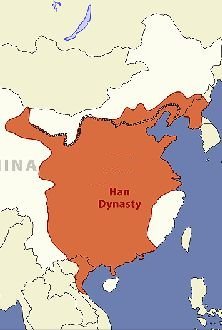
|
Five Dynasties and Ten Kingdoms
Later Han Dynasty - 947 to 951 - 4 Years
Establishment of the Later Han Liu Zhiyuan was military governor of Bingzhou, an area around Taiyuan in present-day Shanxi, an area that had long been a stronghold of the Shatuo Turks. However, the Later Jin Dynasty that he served was a weak dynasty and was little more than a puppet of the expanding Khitan empire to the north. When the Later Jin finally did decide to defy the Khitan, they sent an expedition south that resulted in the destruction of the Later Jin Dynasty. However, following constant harassment from the Chinese on the return route, he died of an illness in May 947. The combination of the fall of the Later Jin Dynasty and the succession crisis among the Khitan resulted in a power vacuum. Liu Zhiyuan was able to fill that void and founded the Later Han Dynasty. Territorial extent Its southern border with the southern states stretched from the East China Sea about halfway between the Yellow River and the Yangtze River before dipping south toward the Yangtze at its mid reaches before turning northwest along the northern border of Sichuan and extending as far west as Shaanxi. In the north, it included much of Shaanxi and Hebei except the Sixteen Prefectures, which were lost by the Later Jin Dynasty to what was by this time known as the Liao Dynasty. Short-lived Dynasty The Later Han Dynasty was among the shortest-lived regimes in the long history of China. Liu Zhiyuan died the year following the founding of the dynasty, to be succeeded by his teenage son. The dynasty was overthrown two years later when Guo Wei, a Han Chinese led a military coup and declared himself emperor of the Later Zhou Dynasty. Return to Five Dynasties Page On to Later Zhou Dynasty ⇨ |